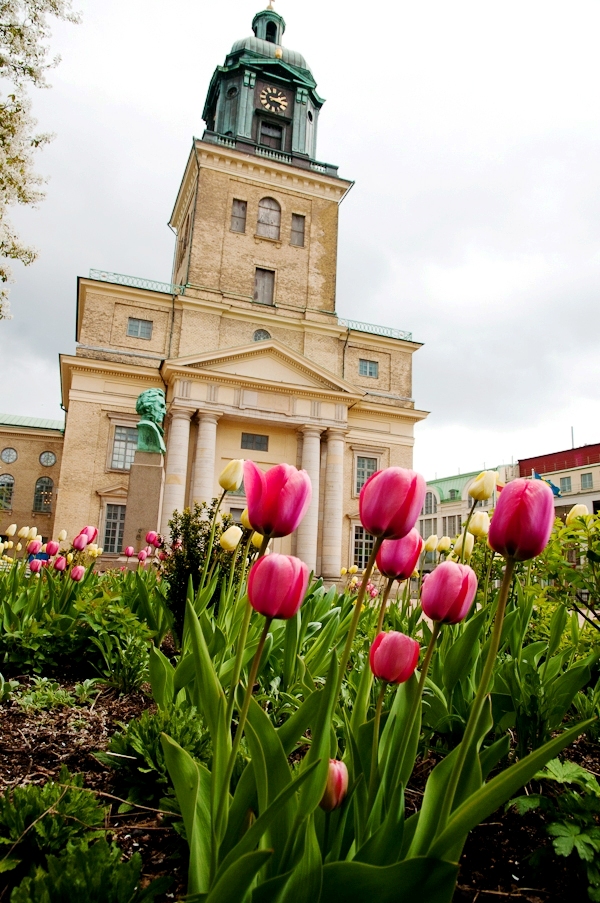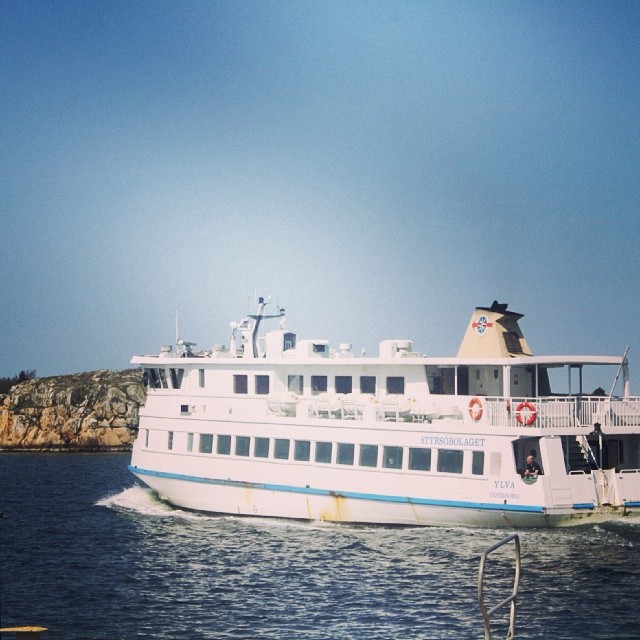SLOW TRAVEL STOCKHOLM
Weekend Away: Exploring Gothenburg
With a population of just beyond half a million, Gothenburg is the second-largest city in Sweden and the fifth-largest within all five Nordic countries. Even so, by comparison, it’s still a relatively small city, making it surprisingly walkable. And although there are 15 tram lines (see Jens Lekman’s Tram #7 to Heaven for more on that) that make getting around a breeze, the city is best enjoyed on foot. That said, here are 10 tips for making the most out of your visit to Gothenburg.
Stroll along Kungsportsavenyn
Kungsportsavenyn (Kingsgate Avenue) is a kilometer-long stretch of road that is similar in style to Paris’ Champs-Élysées or Berlin’s Unter den Linden. Known colloquially as The Avenue, Kungsportsavenyn is home to countless shops, cafes, restaurants, and cultural venues.
Beginning in the South at Götaplatsen, you can admire the Museum of Art, Concert Hall, and City Library and see the famous statue of Poseidon. Then continue strolling along the streets – which are often lit up at night – until you reach Kungsportsplatsen, the heart of the downtown area. Here you will see the city’s former defensive moat that is now a canal, along with a statue of the former king, Charles IX, on a horse.
Explore the Market Hall
Situated some two blocks away from Kungsportsplatesen is the Saluhallen on Kungstorget, a market hall that houses 40 different shops and stalls. Built in the late 1880s by architect Hans Hedlund, the market hall opened in 1889 and later underwent renovation that was completed in 2012. It is not the only market hall in Gothenburg, but it is the largest and better-known of the two.
The Saluhallen is a one-stop shop for all your edible needs. Pick up warm baked bread, peruse the local produce, grab some tasty chocolates, find a bargain on fresh seafood, choose from a variety of spices, and check out the selection of cheeses. You can also sit down at one of the stalls to enjoy a smörgås or a warm meal made on the premises.
Ride the Ferry
Gothenburg is a city of water, and as such, its local public transportation agency, Västtrafik, not only offers trams, buses, and trains, but also ferries. For a view of the city from a watery vantage point, catch a ferry and ride through the inner city along the Göta älv, taking in some of the famous sights such as the opera house and the Lilla Bommen skyscraper.
However, if you have more time and the weather is nicer, you might want to consider heading out to Saltholmen. From there, you can visit the Southern Gothenburg Archipelago, home to 5,000 people year-round (with that number more than doubling in the summer). The Northern Gothenburg Archipelago is also nearby, but its depature point is different and the islands aren’t actually located in Gothenburg.
The islands of the archipelago are car free, but each island has its own form of transportation, ranging from wheelbarrows to mopeds. Your best bet is to pack a picnic lunch, then grab a ferry (a ride on which is the same price as a regular transit ticket) and explore the islands at leisure.
Walk Around Stora and Lilla Delsjön
Sweden is home to thousands upon thousands of lakes (official numbers state that there are 97,500 lakes larger than two acres). Located not too far outside of the city center are Stora Delsjön and Lilla Delsjön, a big and a small lake that are connected to one another and also the source of Gothenburg’s drinking water. Walk around one lake, or opt for 9.5-kilometer journey around both.
Not far from the parking lot of Lilla Delsjön is Bertilssons Stuga, a former farmhouse turned quaint red cottage where you can buy lunch and snacks or simply enjoy a fresh cup of coffee. Continue further down to the water where there is a small wooden hut-like structure. Inside is a stove and a fire where you can roast hot dogs or marshmallows. In warmer weather, it’s also fun to rent a canoe and paddle out on the water, go for a swim, or relax while fishing.
Stop by the Systembolaget
Scandinavia has a reputation for a high cost of living, and that also means that the alcohol doesn’t come cheap. So unless you have budgeted big for your trip, you might want to avoid going out drinking every night, as those casual beers can add up. Additionally, if you’re driving, the legal limit is set at a low 0.02%, which means you might be better off buying alcohol and enjoying it in your hotel or guest accommodations (drinking in public is not allowed).
Luckily there is the Systembolaget, the only place you can buy alcohol above 3.5% (except for in restaurants and bars, of course). Some people hate that it’s a government-run monopoly, but if you want to imbibe, you can’t avoid it. Though the hours are a bit strange, which might require some planning ahead, the prices are acceptable and the selection is actually rather good, with a large variety of wine, beer, hard alcohol, and cider from Sweden and abroad.
Get your thrills at Liseberg
Of all the attractions in Sweden, Liseberg is the most popular, with approximately 3 million visitors per year. The amusement part, which opened in 1923, covers 260 acres and boasts 37 rides, and has been voted as one of the top 10 amusement parks in the world.
In addition to rides, Liseberg is also home to a fair amount of nature. Because it is built in a wooded area, there are plenty of trees in the park, as well as a garden that features a wide variety of flora. Once a year the park hosts “Garden Days,” where visitors can explore the lush beauty, wander through the vegetable and herb gardens, and learn all about plants.
Though the park is only seasonal, from April through October, Liseberg also opens its gates during the holiday season for a Christmas Market, which runs on weekends in November and throughout most of December. Here you can buy glögg (the Swedish answer to Glühwein) and specialties like reindeer meat kebabs.
Enjoy Fika in Haga
Just as the Germans have their Kaffee und Kuchen, the Swedish people have their own word for enjoying coffee and sweets: fika. The contents of fika can vary based on the season – ranging from semla (a pastry-like bun with an almond paste and cream filling) to lussekatt (a saffron-flavored bun) – but one of the most popular items is the kanelbulle (cinnamon roll).
Cinnamon rolls were invented in Sweden, so it only makes sense that you try one on your visit. They are less sweet than most American versions, with a mixture of cinnamon and cardamon in the dough. And rather than icing on top, the bullar (the plural form of bulle) usually has chopped almonds and pearl sugar.
It’s not difficult to find bullar all throughout Gothenburg, but Haga is a district in town best known for displaying them in windows and serving them in nearly every café. Haga itself is a small but popular district in town, with 19th century-style buildings and cobblestone streets that create a cozy, intimate feeling amongst residents and visitors. After a stroll through the area, sit down in one of the many inviting cafes and enjoy people watching while having fika.
Wander through parks
There are plenty of green spaces in Gothenburg but two of the best – the Gothenburg Botanical Garden and Slottsskogen – are conveniently located adjacted to one another.
The former covers 430 acres and is filled with themed gardens, as well as a nature reserve, greenhouses, and an arboretum. The entrance fee is also a low 20 SEK (2 euros) that is paid on a voluntary basis. But after you wander the magical pathways of the garden, you won’t have a problem parting with that money.
Meanwhile, just across the roadway is Slottsskogen (Castle Forest), a 338-acre park. Here you can hang out in the park with a picnic or go jogging along the many running trails. There is a playground for children, a barbecue area, a dance pavilion, and a theater stage. There is also a free zoo featuring Nordic animals such as Gotland ponies, elk, and Öland geese, and even the non-native Humboldt penguin.
Get some culture
Gothenburg is a city known for its international appeal, with annual festivals that draw visitors from around the world. In January and February the city is host to the Göteborg International Film Festival, the largest of its kind in Scandinavia. April brings out the science lovers with the International Science Festival. Then in the summer, Metaltowntakes over the city for three days, while Way Out West features the hottest names in indie and electronic music. There is also the Gothenburg Book Fair that takes place every September.
However, if you don’t happen to be visiting during one of these events, there is still plenty of culture to be had. There are dozens of museums in the city, with topics ranging from art, fashion, and design to history, the sea, and science.
And of course, who can talk about Sweden without mentioning its music? There are a handful of venues where you can catch a live gig, but for an introduction to some Gothenburg-based artists, check out this primer of a playlist.
Indulge in some Lördagsgodis
Literally translated, Lördagsgodis means “Saturday candies.” This tradition dates back to the 1950s when parents decided to ration candy consumption for their children. The reasoning behind this was varied; some parents wanted to help avoid cavaties or other dental problems. Others could use it as an incentive for good behavior during the week. Still others saw it as a way to cut down on unhealthy food for the week, allowing themselves and their children a “cheat day.” But whatever the motivation, it stuck.
Even today, it’s not unlikely to see families walking to the local candy store to stock up on bulk candy. So if you happen to be in Sweden on a Saturday, you should definitely consider doing the same. Consider visiting 4-Gott (which claims to be the largest candy store in the city), Sega Gubben, or any store with the word “godis” in its name, though grocery stores and newstands also work well in a pinch.









